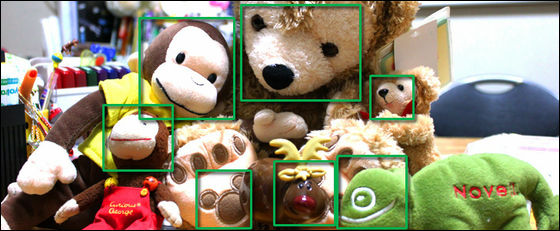Is advanced image recognition like a terminator possible by machine?

A system that recognizes images instead of human eyes and performs positioning, type, measurement, inspectionMachine visionIt is a system which becomes "machine eyes" like reading letters. Current machine vision is that objects can be recognized at the same level as human beings, and the media company owned by Massachusetts Institute of Technology has a history of unexpected evolution of advanced image recognition algorithms that support this system Published science and technology journalsTechnology reviewIt is revealed.
The Revolutionary Technique That Quietly Changed Machine Vision Forever | MIT Technology Review
http://www.technologyreview.com/view/530561/the-revolutionary-technique-that-quietly-changed-machine-vision-forever/

Google Lunar X PrizeIs a competition competing for "the first private lunar exploration by the private sector" that is managed by the X Prize Foundation and sponsored by Google. In addition, compete for "device development for diagnosing diseases"Qualcomm Tricorder XPRIZEAnd "Development of artificial intelligence capable of attractive speech" competeA.I. XPRIZE presented by TEDThere are many competitions in the world to promote the advancement of machines such as.
ImageNet'sLarge Scale Visual Recognition Competition(ILSVRC) is one such competition, which aims to develop a better image recognition algorithm. In this competition, let the participant 's image recognition algorithm judge "whether the object specified in the presented image is included" or not, and "surround the discovered object with a frame line" It competes for sophistication of algorithms. More than 1000 kinds of items are prepared from "abacus" to "zucchini" for image recognition, and these items are recognized one by one from image data with more than one million, and compete for the correct answer rate.
The act of "determining the real image of an object" like this is that there is no feature for human beings, but for computers it was very difficult. However, at ILSVRC held in 2012, the research team of Toronto University in Canada showed off "SuperVision"With this image recognition algorithm, this breakthrough occurs in this image recognition technology, and the precision of current machine vision is dramatically improved.

ByTerrykimura
SuperVision, which appeared in ILSVRC in 2012,Convolution neural network"We used a technology called called.
This SuperVision was the world's first in the world that the algorithm adopting the deep convolution neural network won the competition, and the results did not make other results. The correct recognition rate of the image recognition algorithm won by ILSVRC in 2010 was 71.8%, and the winning algorithm in 2011 was 74.2%. However, SuperVision wins in 2012 with 83.6% correct answer rate, at that time the correct recognition rate of the image recognition algorithm which kept good results after SuperVision was 73.8%, which was a victory with about 10% difference is. With this overwhelming victory, the approach using "deep convolution neural network" adopted by SuperVision spreads at a stretch in image recognition world.
The convolution neural network consists of making multiple layers each consisting of a group of finely classified images. In order to be able to recognize various images, all the images of each layer are partially consistent, and let's process them repeatedly until the system can properly recognize the images.

Originally deep convolution neural network was originally invented in the 1980s, but this level of advanced image recognition became possible in the last couple of years. For example SuperVision consists of 650,000 neurons, and this neuron forms 5 layers. In addition, SuperVision has about 60 million parameters, and as each machine learns the process, each parameter is fine-tuned, it seems that the details of the object become recognizable. The parameters for recognizing this object were far away, so it was possible to recognize more detailed images than before.
Since 2012 when SuperVision appeared, the accuracy of image recognition has been improved by several research groups, and in 2014GoogLeNetAn image recognition algorithm created by a Google engineer called "The correct answer rate of the threat of 93.3%" has been launched.

According to Olga Russakovsky of Stanford University, one of the important things in image recognition algorithms is "high quality data set". All images in the data set should be useful as image representative for each image as image presence and image data for learning should also be able to support them. To create a high quality data set, Mr. RussakovskyAmazon Mechanical TurkI tried the method of asking actual human beings to categorize images by using them, and as a result, I succeeded in creating an image database that enables highly accurate recognition.
Russakovsky said, "According to our research, educated people will release better accuracy rates than GoogLeNet, which currently has the highest image recognition accuracy," according to Russakovsky, who compares human eyes with machine vision. However, it is said that human beings do not show overwhelmingly superior performance also in the task of image recognition anymore. For example, accuracy of sorting dogs by breed of dogs is higher for machines than for humans It seems that it is excellent.

The GoogLeNet image recognition algorithm seems to be working on recognition to recognize sophisticated differences such as "small" or "thin", and to recognize photographs processed with filters that are common in modern times is.
The T-800 that appears in the movie terminator is a future Android sent from 2029, but expectations will increase if it is possible to realize a machine vision equivalent to T-800 in another 15 years.
Vision Terminator - YouTube
Related Posts:






